Drinkable Book combines sanitation manual and filters for contaminated water
A team of American scientists and designers have collaborated to create the drinkable book, using a combination of typography, nanotechnology and specially-designed filter paper.
Launched by communications group DDB New York for charity WaterisLife, the Drinkable Book is a sanitation manual with pages that double as water filters. It was created by researchers from American institutions Carnegie Mellon University and the University of Virginia.
The book's pages contain unique technology, invented by chemist Dr Theresa Dankovich, which can help decrease the bacteria count of contaminated drinking water by more than 99.9 percent.
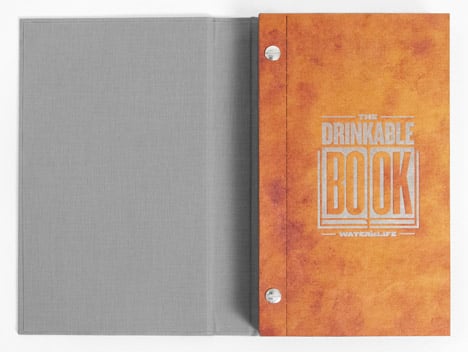
New-York-based typographer Brian Gartside was brought on board to help shape the book's aesthetic.
"At the moment, this is by far the most exciting project I'm working on," he told Dezeen. "The process of designing the book itself was unlike anything I've done before, simply because of all the variables that were beyond our control."
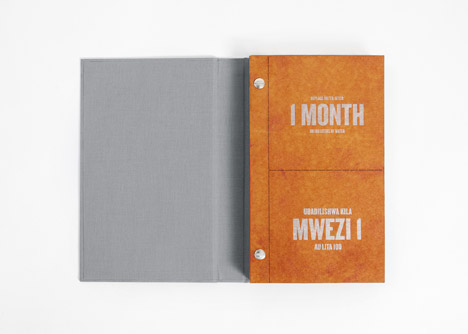
Historically, WaterisLife faced serious challenges when it came to providing both clean water and useful information about sanitation to communities in need, but The Drinkable Book appears to tackle both issues simultaneously.
Each page gives 60 days of safe drinking water, while an entire book can provide up to four year's worth.
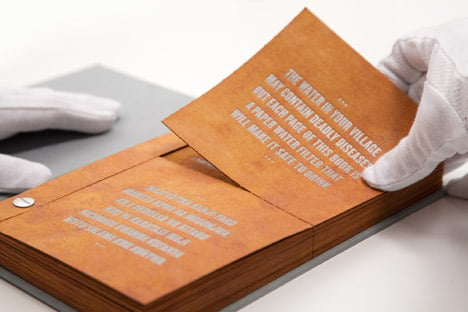
A single page can be broken into two 4.5 by 4.5-inch filters; the top one is printed with hygiene information in English, while the bottom is translated into the relevant local language. Up to now, they have printed a run of books destined for Kenya, which are written in English and Swahili.
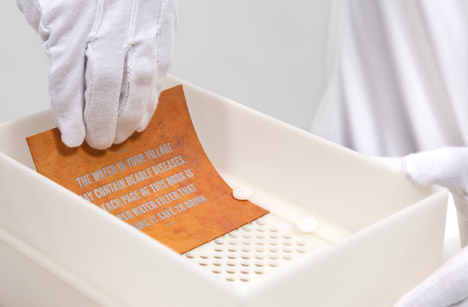
"The end goal would be to produce books/filters for each of the 33 countries that WaterisLife works in, but we had to start somewhere," Gartside said.
Choosing the final ink to print with required special consideration, as many contain chemicals that could be harmful when ingested.
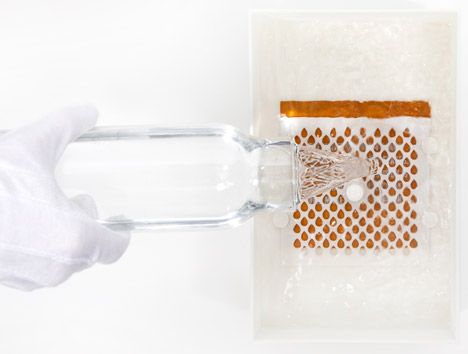
"Most commercial printing inks are either petroleum or rubber based, and contain nasty chemicals that you really wouldn't want to ingest," said Gartside. "Even modern soy based inks are often only 20-percent soy, and aren't something we'd want people drinking," he said.
The ability of each page to convey a clear and succinct message was very important, which meant a simple and restrained type strategy was needed.
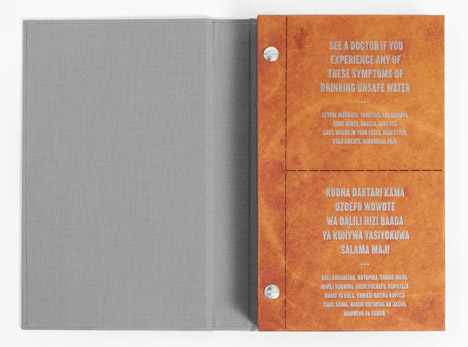
"It was my first time typesetting in Swahili, which was a bit of a challenge," he said. "A lot of words in Swahili tend to be really long, so getting decent typeset pages took a bit of doing." A 3D printer was used to create filtration trays, which proved to be a "huge hurdle" for Gartside and his team.
"Fortunately for us, we had a great ally in Peter X Ksiezopolski at xweet, who helped us translate our vision of an all-in-one filter container into printable files," Gartside said.
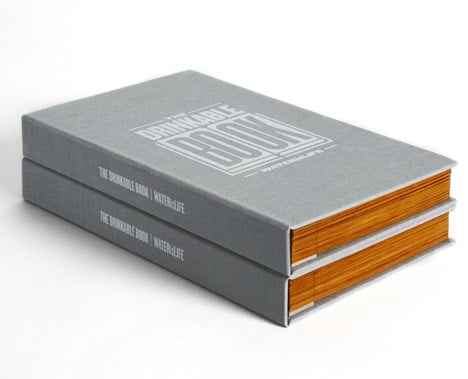
Jamie Mahoney, Director at Virginia Commonwealth University's Bowe House Press, also played an important role in securing the food-grade ink use at the printing stage.
Gartside's team now faces the task of scaling up production to commercial level. "Right now we're making as many books as we can, but at the moment the sheets are being treated by hand, which limits our, capacity," he told Dezeen.
"We're hoping that the launch of this project can be used to raise funds for mass production, both of the book, as well as the filters themselves," Gartside said. "We'd like to be able to translate it and get this book into the hands of people in all of those places — At that point, the impact could be massive."